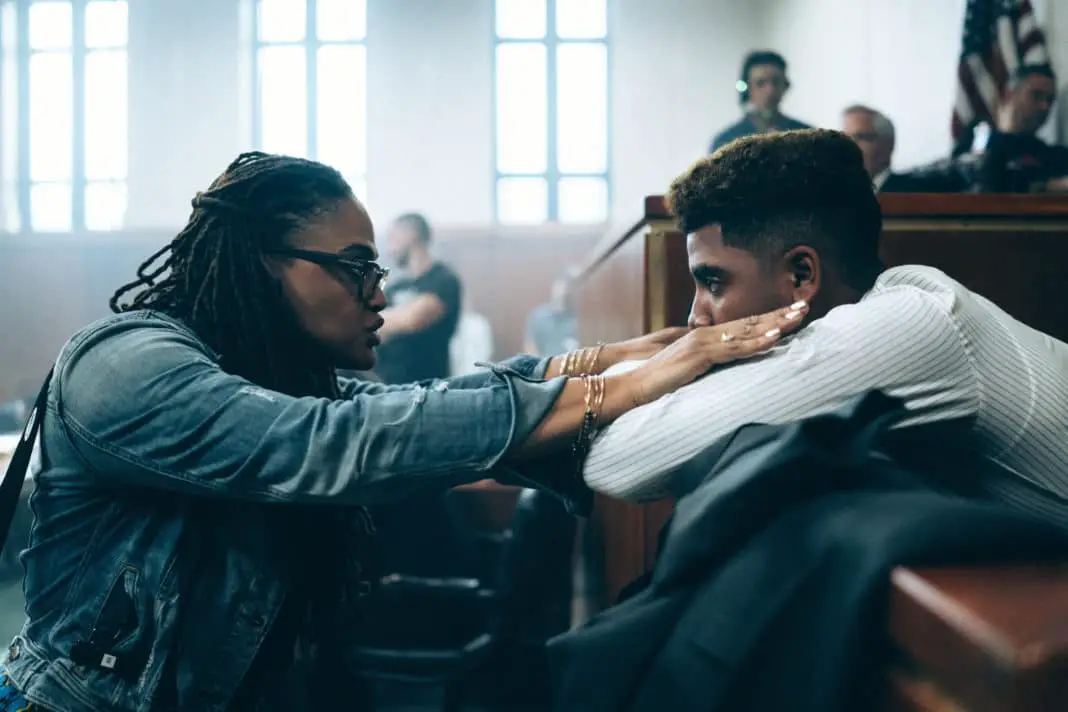In 1989, five teenage boys were wrongfully accused and convicted for the rape and attempted murder of a jogger in Central Park. The boys — the subject of the series “When They See Us” — were between 14 and 16 years old, and they were people of color.
In 2002, the real perpetrator confessed, and the remaining imprisoned boys — now men — were exonerated. After vilifying the five for years, the media made the boys into martyrs of a corrupt criminal justice system. The city paid the men a $41 million settlement, and the “Central Park Five” became internationally recognized as an unnerving example of racial injustice in America.
For many of us in Generation Z, the injustices of the Central Park Five feel like an event from a bygone era. It is a term that we associate with our social studies classes, or it is a talking point during a heated dinner table discussion about American politics. Many of us were too young to remember the trial or the media frenzy chasing after each chapter of the case.
In other words, while most young people today know about the Central Park Five’s collective identity as victims of injustice, many of us know nothing about the individual personalities that the news media concealed and often ignored in its depiction of the case. The five convicted boys — Antron McCray, Yusef Salaam, Raymond Santana Jr., Kevin Richardson and Korey Wise — have remained anonymous in our consciousness for years.
Ava Duvernay’s new Netflix film, “When They See Us,” aims to change this misconception by focusing specifically on the lives of the five wrongly accused boys and their families. The four-part miniseries follows each of the five boys with a humane gaze as they face a corrupt criminal justice system.
While this story has been given filmic treatment before — in 2012, Ken Burn’s documentary “The Central Park Five” covered the 1989 jogger incident to critical acclaim — Duvernay differs in her approach by zeroing in on individual narratives while eschewing focus from the societal implications surrounding the case.
Through this approach, Duvernay proves that harnessing individual narratives can be a powerful technique for inspiring empathy in otherwise distant stories. In turn, the miniseries’ reception shows how emphasizing individual narratives can also antagonize others. The writing and cinematography of “When They See Us” illustrates how when addressing systemic problems through film, it is more effective to fix the camera on a single sobbing face than attempt to showcase the whole picture at once.
The writing structure of “When They See Us” mirrors the emotional journey of the five boys as they become embroiled in a heinous crime. The first episode depicts the evening of the jogger incident itself and dives into the tense interrogations and coercion that followed the evening. We follow everything from the boys’ point-of-view, and we watch how detectives pry confessions out of their shell-shocked, sleep-deprived systems.
The second episode the explores the lead-up, proceedings and outcomes of the trial. There is an especially powerful extended shot after each boy receives their verdict, and the camera focuses on each of the boy’s grief-stricken faces. The outside world falls out of frame. The music mutes. We are stunned, panicked and the camera is so close to the boys’ faces that we as viewers cannot divorce ourselves from the families’ pain.
Duvernay could’ve chosen to frame the prison sentence as the series’s climax, but instead she places the decision at the story’s midpoint. This writing choice cleaves the mini-series into two distinct “before-sentence” and “after-sentence” acts; the story’s tone and visual style change on both sides of this division.
The second half of the series recasts most of the boys with adult actors, and it is both tonally and literally darker. The penultimate episode follows Raymond, Yusef, Antron and Kevin as they adjust to life inside juvenile prison. Then it flashes forward to show how the trauma of the American prison system persists beyond their sentences.
While the writers pepper in fictional details to make the boys’ personal lives more compelling, the episode’s key beats — Raymond facing doubt from extended family members about his innocence, Antron struggling to find meaningful work as a former convict — are based on harsh truths about how prison keeps the imprisoned sealed in a tight membrane of misery.
Duvernay abstains from showcasing Korey’s story until the show’s final episode. Korey was 16 years old at the time of his sentence, and he was the only one of the five boys sent to an adult prison. The final episode provides an unflinching gaze into Korey’s interior mind as he grapples with countless abuses of power behind bars. It is slow and grueling. Flashbacks to the evening of the attack remind viewers that Korey is still fundamentally a child, and watching him recount childhood crushes and innocent boyish wonderings as an adult behind bars is heartbreaking.
While Duvernay mostly keeps the camera focused on the boys, she also devotes some time to exploring the machinations of the case’s prosecutors. Actress Felicity Huffman portrays the Manhattan district attorney who oversaw the case, Linda Fairstein, as aggressive and bullish.
Following the release of “When They See Us,” Fairstein wrote an article in the Wall Street Journal calling the film an “egregious falsehood”; she notes how the film defames her and omits a key riot on the evening of the attack that complicates the film’s assertion that the boys are totally innocent.
Since the miniseries’s release, Fairstein has been dropped by her publisher. She also resigned from her trustee board at Vassar College, and #CancelLindaFairstein has been circulating on Twitter. While Duvernay has since emphasized how “the story is not about her,” this backlash against Fairstein reveals another consequence of using individual narratives to tell stories about systemic problems.
If the Central Park Five are made to be heroes in a narrative about a broken justice system, the story will also naturally demand a villain. In an age where social media mobs “cancel” people in positions of power at the first sign of wrongdoings, dramatized approaches of real stories must be careful not to reduce the complexities of broken power systems down to the misjudgments of individuals, lest more prosecution without due process occurs.
Duvernay also “zooms out” sometimes to show real-life footage of Donald Trump appearing on national television to discuss attack ads he ran against the boys. In the weeks leading up to the trial, Trump paid thousands of dollars to run ads in New York City newspapers calling for the return of the death penalty in order to execute the five boys. The inclusion of the Trump footage reminds viewers of the story’s ongoing relevance. The Central Park jogger case is an old song, but it is one that reverberates and echoes in the bloodstream of our culture.
“When They See Us” provides a stark window into the interior lives of five boys whose lives were ravaged by racially-biased prosecution. What gives this rendition of the story urgency is the script’s constant reminder that these boys were still just children — with ambitions, girlfriends, favorite foods and intricate family lives — which provides an element of emotional immediacy to a story that could otherwise feel incomprehensible.
Moreover, “When They See Us” and its reception underscores the power of emphasizing individual experiences and perspectives when bringing attention to social issues. While DuVernay’s script has inspired a renewed sense of empathy in the Central Park Five, it has also inspired public pressure to search for a simple villain. In turn, hopefully viewers will understand how DuVernay’s retelling of the Central Park Five case is not a barbed attack against any one individual, but rather a rallying cry of empathy for all who have slipped in between the cracks of a broken system.
















